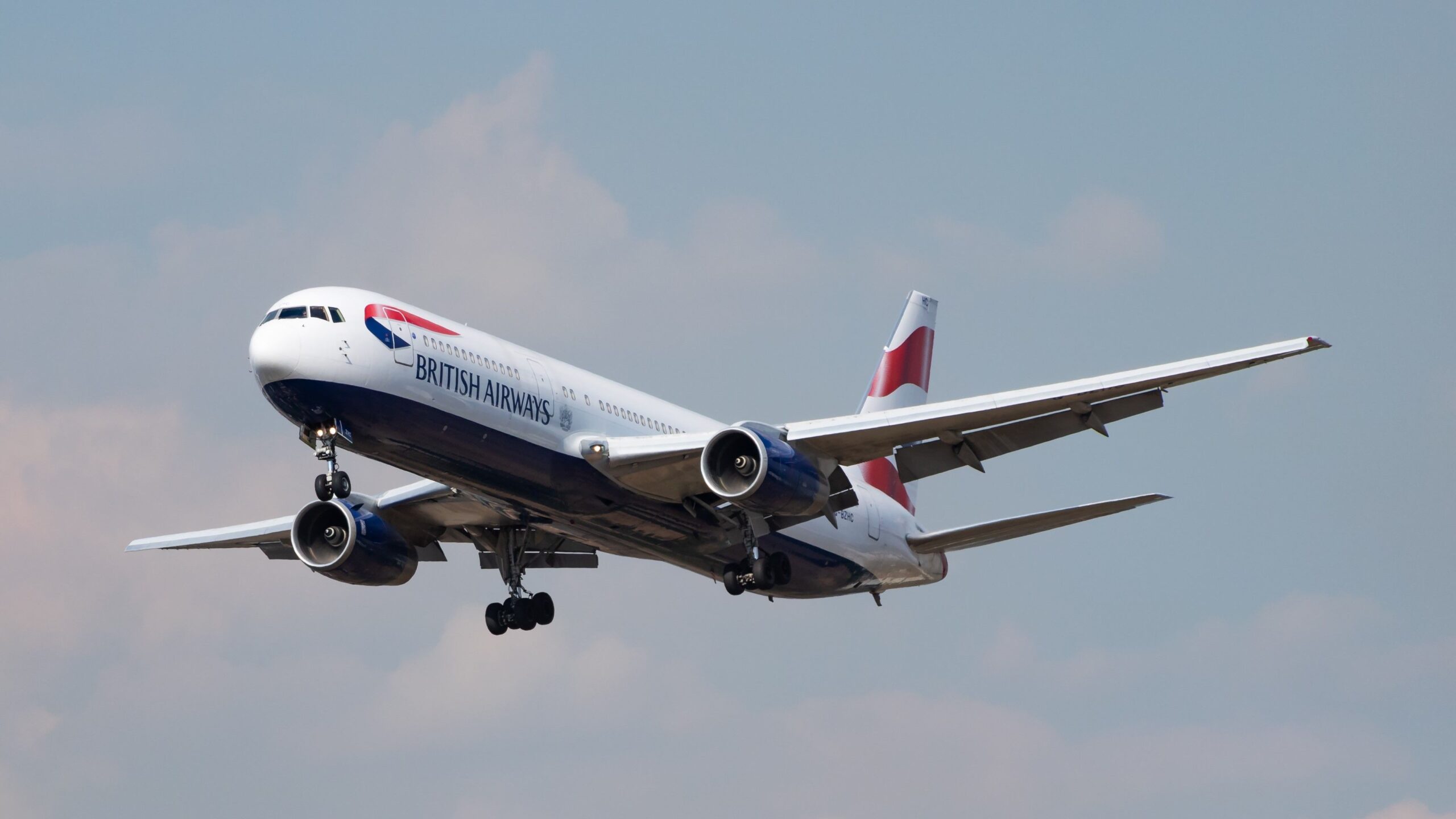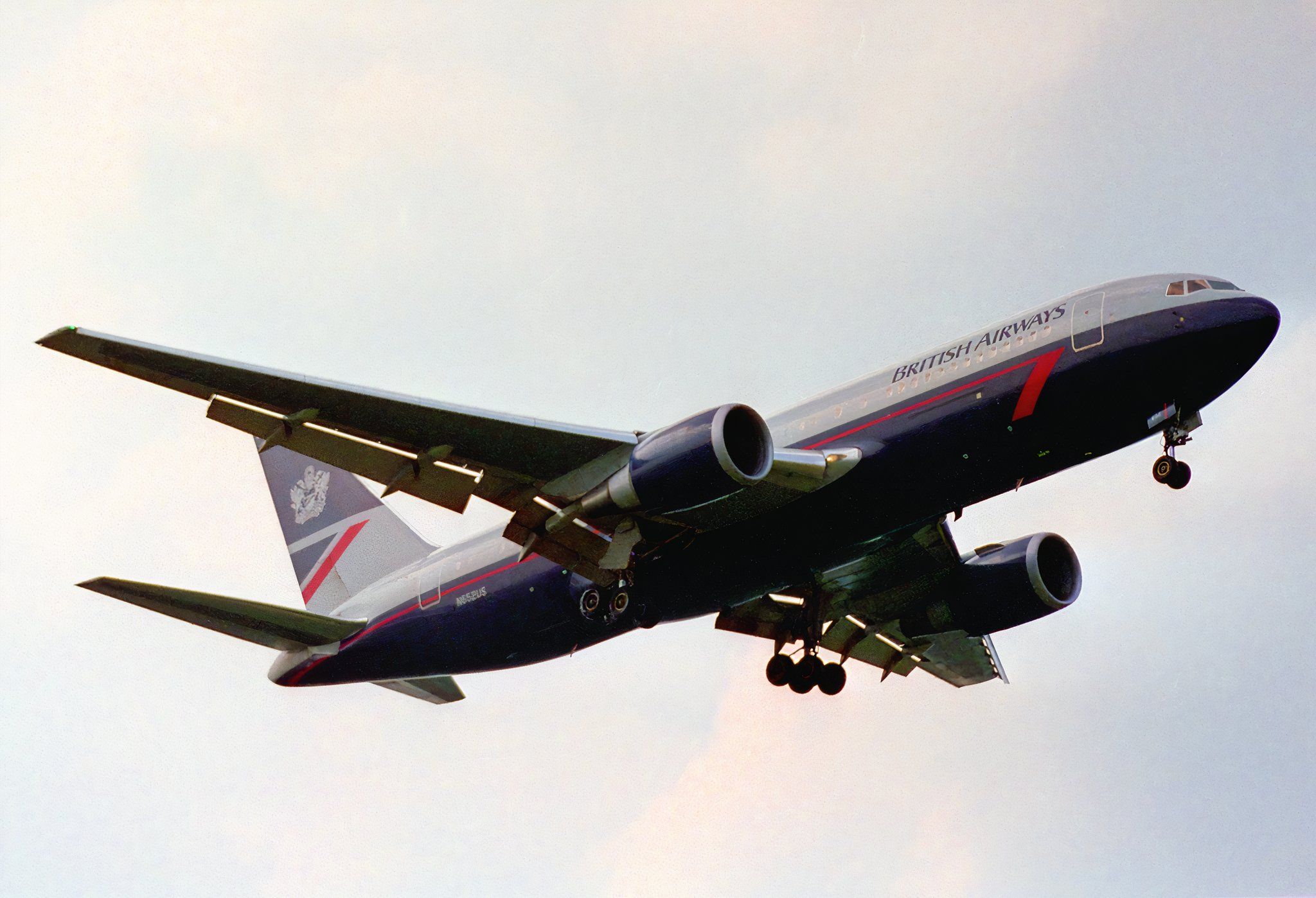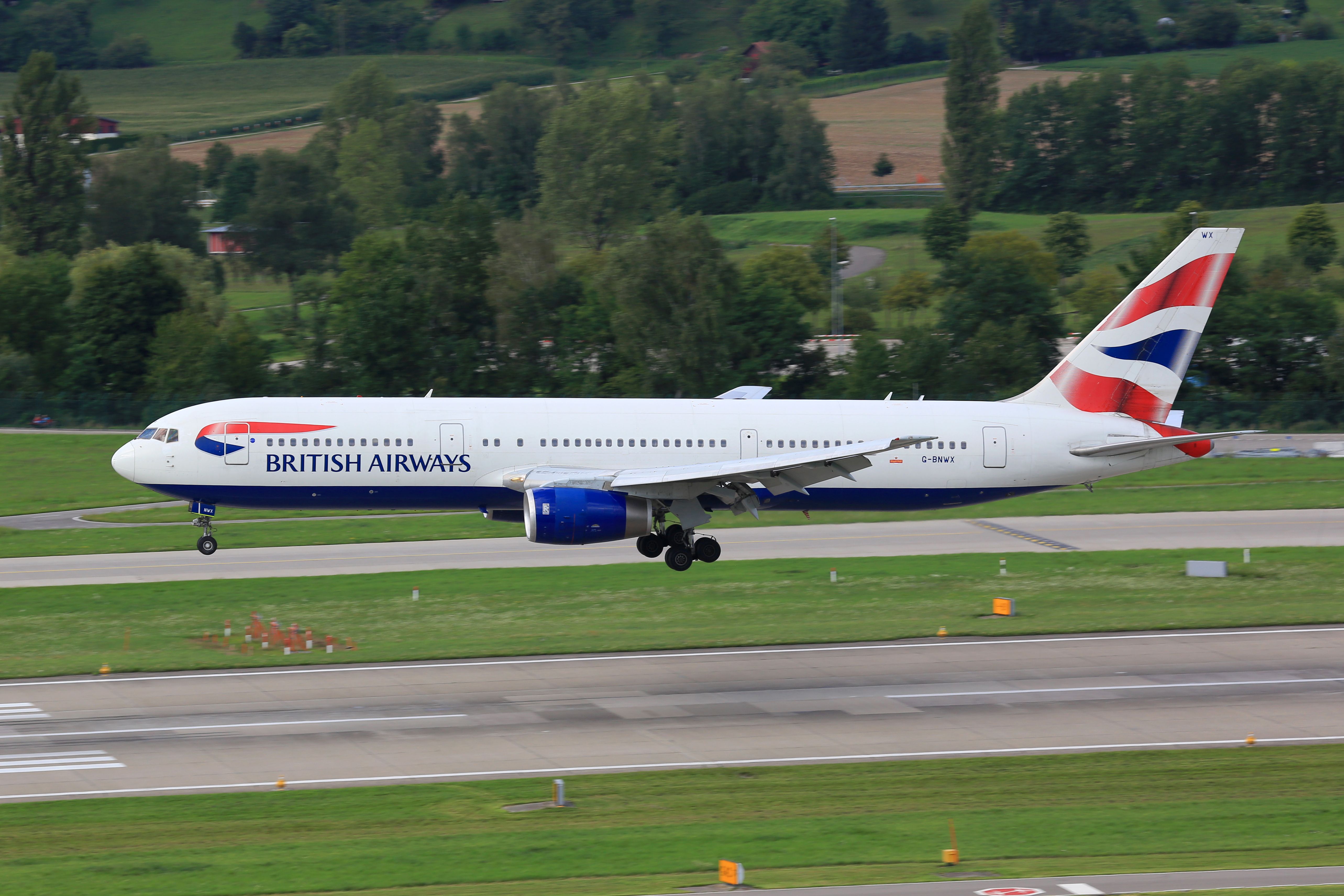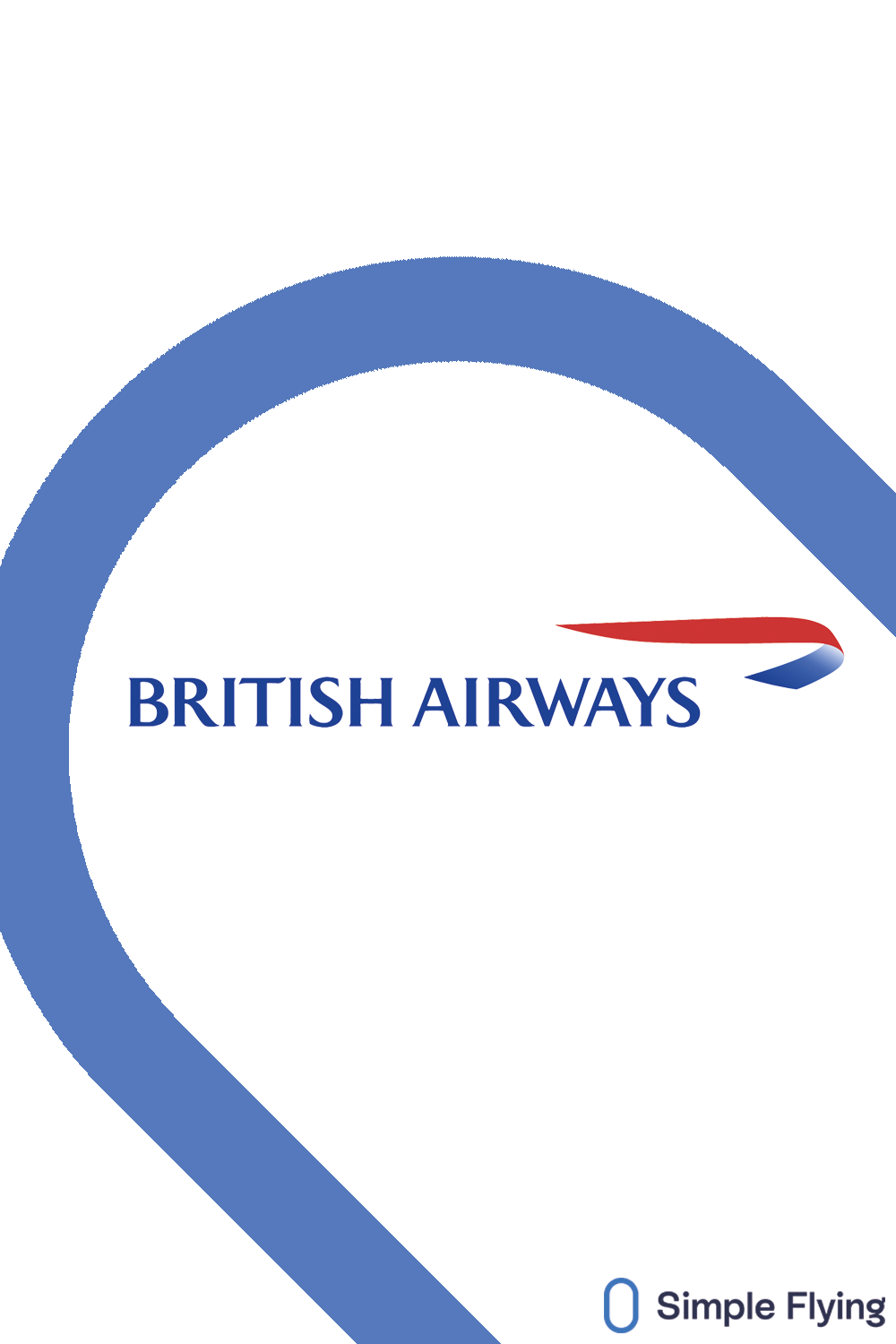British Airways is a fascinating airline with decades of rich history. Part of its story is that of its fleet, which has seen dozens of aircraft types come and go over the years. One of these is the Boeing 767, which spent nearly three decades at the Heathrow-based UK flag carrier and oneworld founding member. Fondly remembered by many passengers, let’s take a look back at the 767’s time at BA.
When did British Airways receive its 767s?
According to historical fleet data made available by ATDB.aero, British Airways operated a grand total of 31 Boeing 767s between 1990 and 2018. Of these, the vast majority (28 aircraft) were 767-300ERs that arrived brand-new at the airline between 1990 and 1998. Every year during this period apart from 1995 saw at least one 767 delivery. 1990 had the most, with nine arriving.
British Airways’ remaining three aircraft from the Boeing 767 family were examples of the 767-200ER variant. Unlike its 28 units of the 767-300ER, these aircraft did not arrive at the national airline of the UK on a brand-new basis. Instead, British Airways operated them on three-year lease deals from USAir between 1993 and 1996. Planespotters.net notes that, they retained their US registrations while at BA:
- N652US: December 1993 to April 1996.
- N654US: May 1993 to June 1996.
- N655US: September 1994 to July 1996
How did the variants differ?
Aside from the number that served British Airways and the length of their stints at the UK flag carrier, there are several factors that set the Boeing 767-200ER apart from the 767-300ER variant. The most conspicuous of these is that of size, with the former model clocking in at 159 feet and two inches (48.51 meters) in length, compared to 180 feet and three inches (54.94 meters) in the case of the latter.

Related
50 Active Examples: These Are The European Carriers Flying The Boeing 767 In 2024
Austrian, Icelandair and TUI Fly all feature.
According to Skybrary, the Boeing 767-200ER’s range is 6,600 nautical miles (12,223 kilometers), compared to 6,105 nautical miles (11,306 kilometers) for the 767-300ER. However, the latter model’s larger size gave it the edge in terms of capacity, with Modern Airliners noting that a typical three-class configuration could accommodate 218 passengers, compared to just 181 in the case of the 767-200ER.
BA deployed various different seating configurations on its Boeing 767 family aircraft over the years, reflecting their usage on a diverse range of routes. Historical fleet data from aeroLOPA provides more color on two long-haul configured three-class setups, with one having nine first, 44 business, and 144 economy class seats. The other had 24 business, 24 premium economy, and 144 economy class seats.
Which examples went on to fly elsewhere?
A handful of the 767s operated by BA had second leases of life at other carriers. For example, when G-BNWI left BA’s fleet in August 2016 after 26 years of service, it joined French carrier OpenSkies. It flew for the airline under the registration F-HILU for two years before being withdrawn from use in September 2018. It then entered storage in St Athan, Wales, before being broken up there in January 2019.
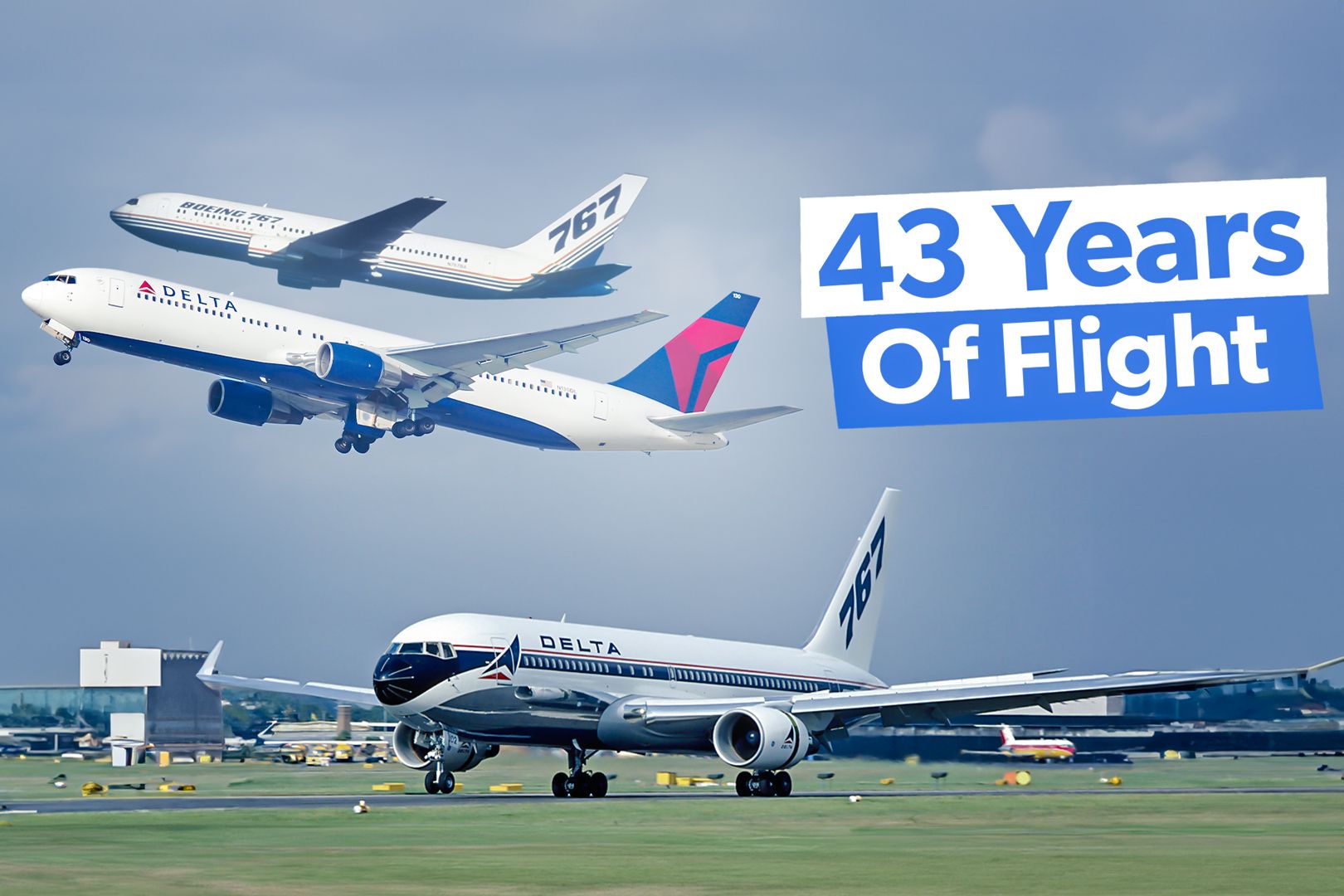
Related
Still Going Strong: 5 Fast Facts About The Boeing 767
The widebody is no longer in its heyday, but that doesn’t mean it’s down for the count.
Seven ex-BA 767s also went on to fly for one of its oneworld partners, namely Australian flag carrier Qantas. These were the first 767s to leave British Airways’ fleet, departing for Australia between June and November 2000. They have all since moved on from the Australian airline, and two remain active today at Eastern Airlines. Of the other five, three are now in storage, and the other two are derelict.
The final few
However, most of British Airways’ Boeing 767s spent their entire working lives at the airline. This meant that, having completed their duty with the carrier, storage and scrapping awaited. 2018 was BA’s last year of 767 operations, by which time just seven examples remained in its fleet. The type had served the airline well on long-haul services as well as European routes where extra capacity was required.
A quick look at historical scheduling data made available by Cirium, an aviation analytics company, shows the importance of the Boeing 767 in British Airways’ 21st-century fleet. The site shows that the UK flag carrier scheduled 17,749 flights with the type in 2004, with the annual total generally fluctuating between around 15,000 and 18,000 flights from then until 2015, when it dropped to the 11,500-flight mark.
Photo: Markus Mainka | Shutterstock
However, all aircraft, even the most versatile, have to step aside at some point, and, after nearly three decades of service at BA, the 767’s time was up. The airline has since modernized its mid-size widebody fleet with the Boeing 787 Dreamliner, and the curtain finally came down on British Airways’ Boeing 767 fleet in November 2018, with a round trip from London Heathrow to Larnaca, Cyprus, and back.
In 2018, British Airways scheduled just 6,506 flights to be operated by planes from its sub-fleet of Boeing 767 family aircraft, offering collective totals of 1,664,614 seats and 1,522,684,772 available seat miles (ASMs). That year, the type was primarily relegated to short-haul duties, with certain domestic flights to the likes of Edinburgh Airport (EDI) and Glasgow Airport (GLA) even seeing widebody service.
Did you ever fly on one of British Airways’ Boeing 767s? If so, when and where did your journey on the type take you? Let us know your thoughts and experiences in the comment section.

